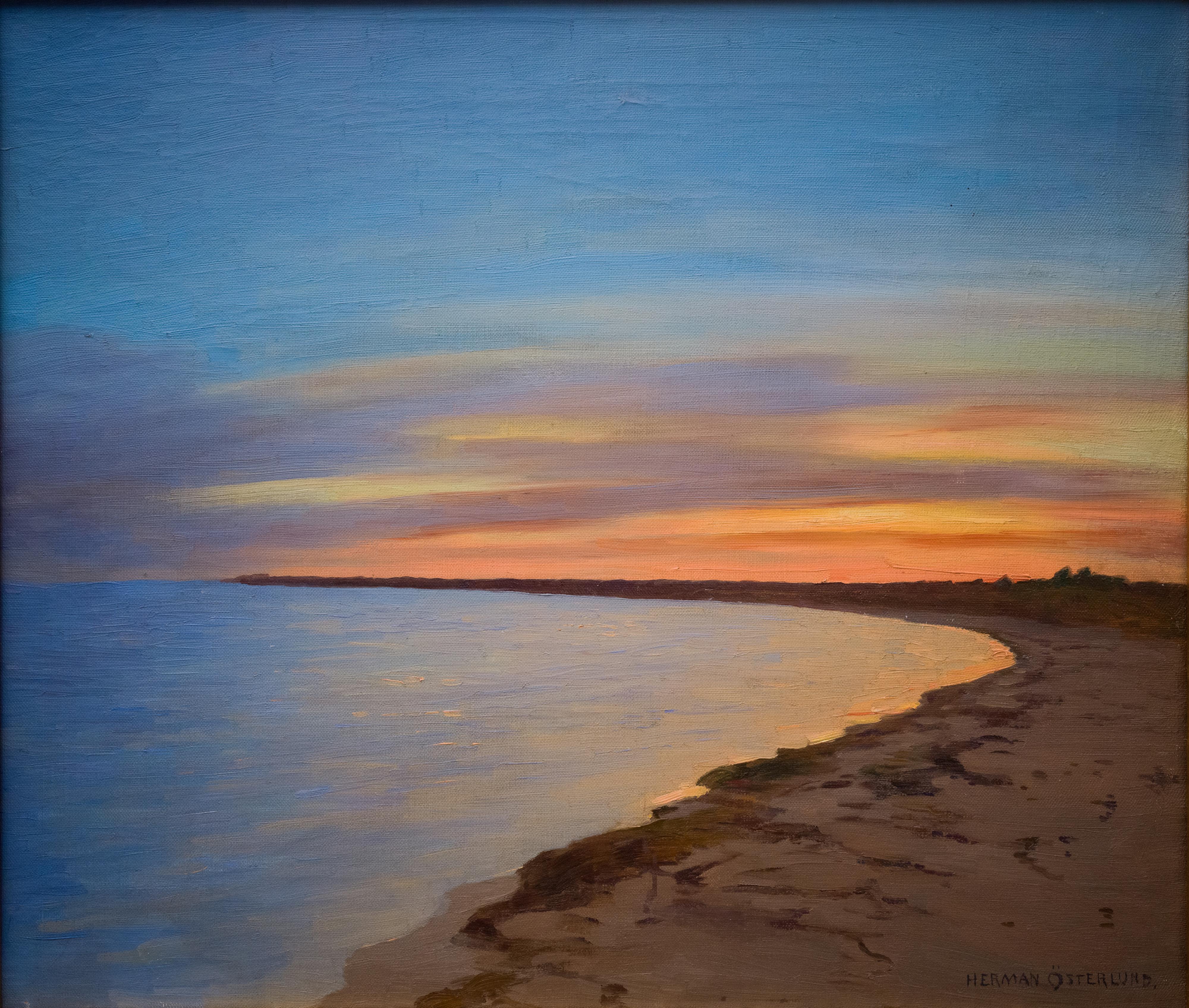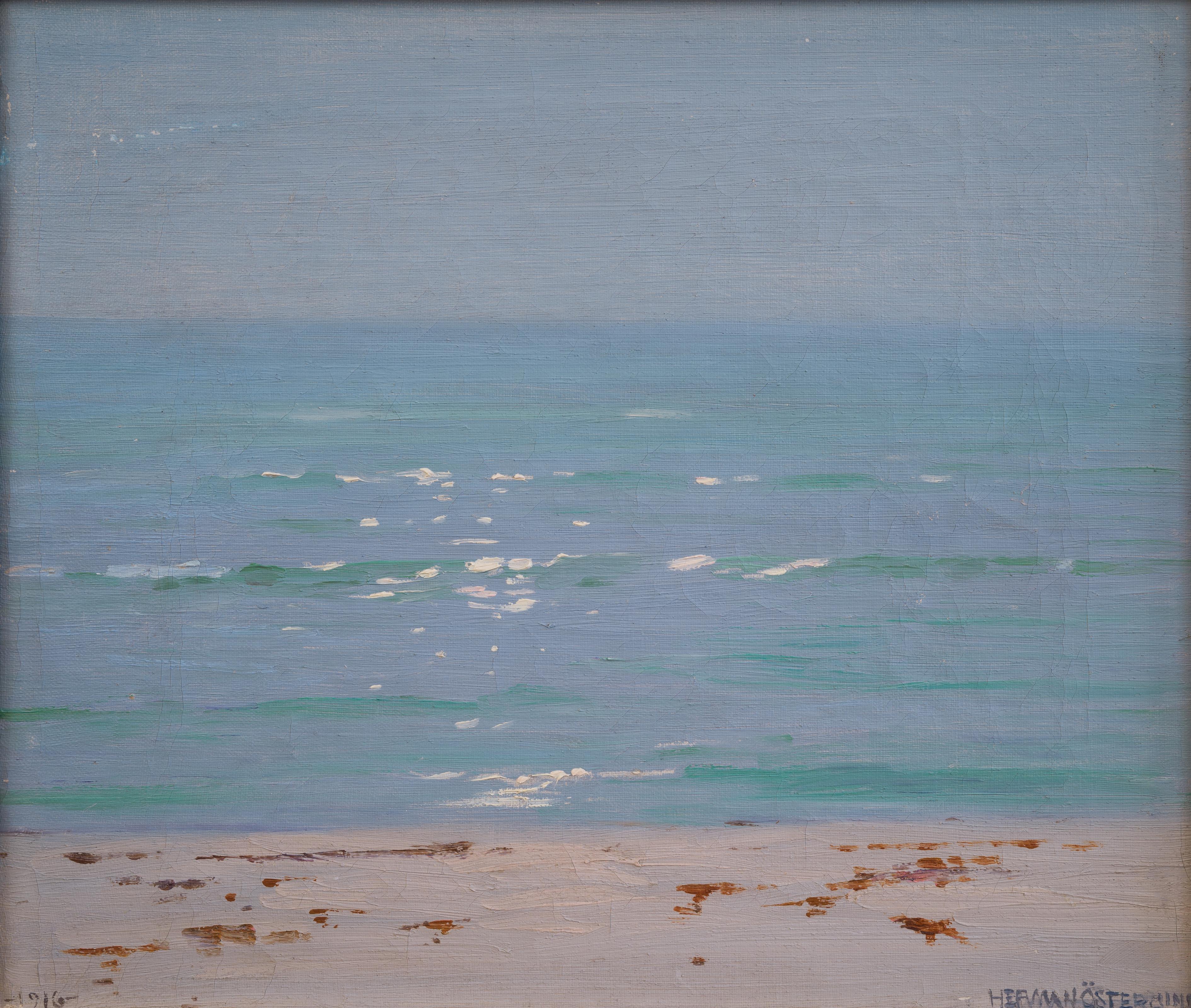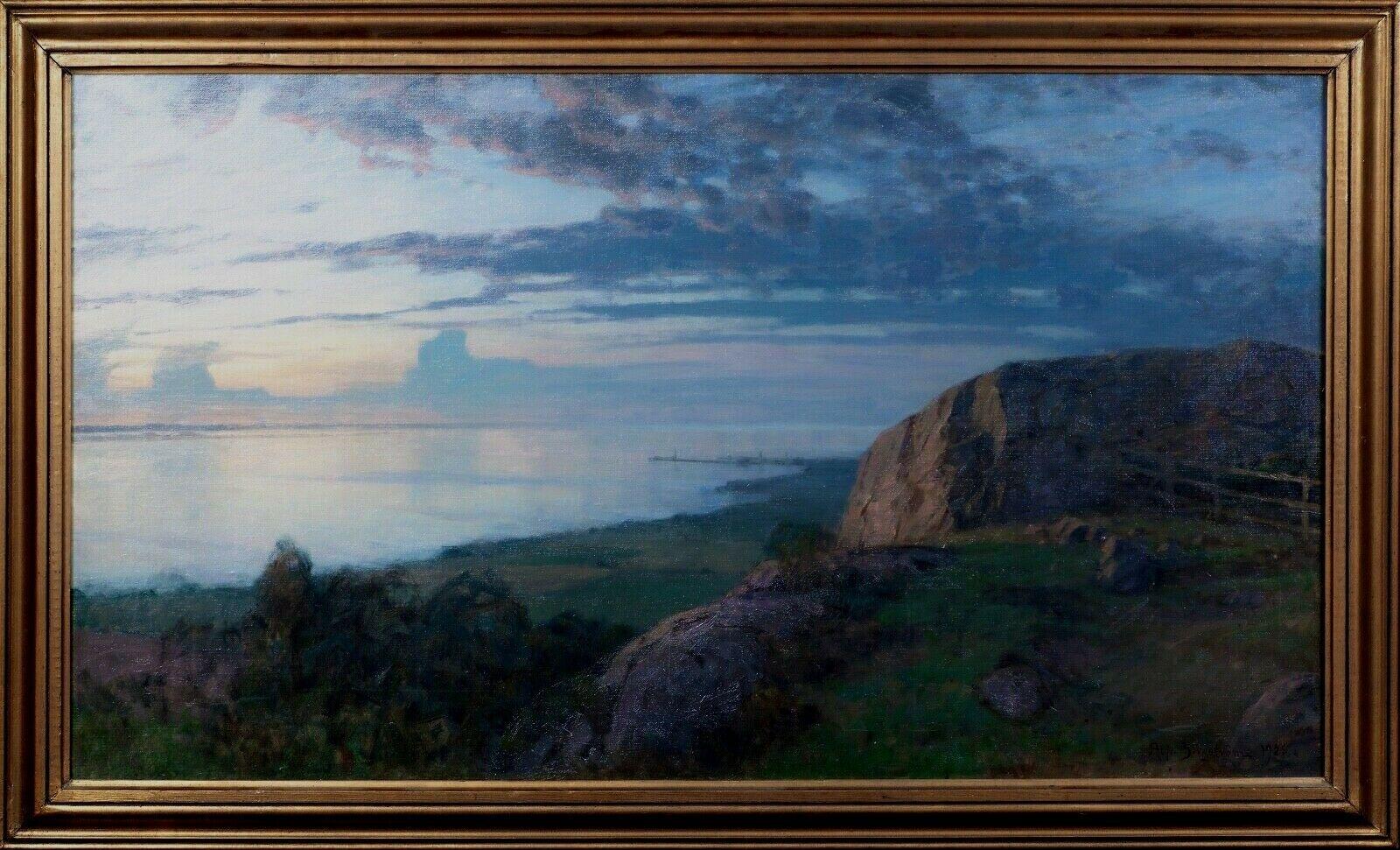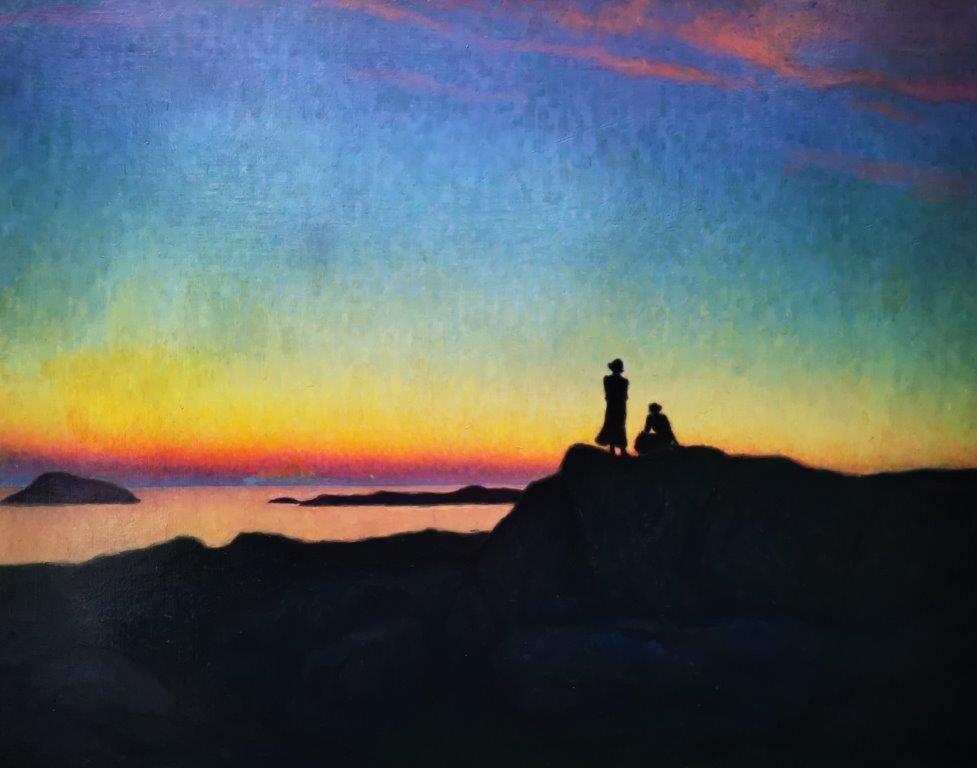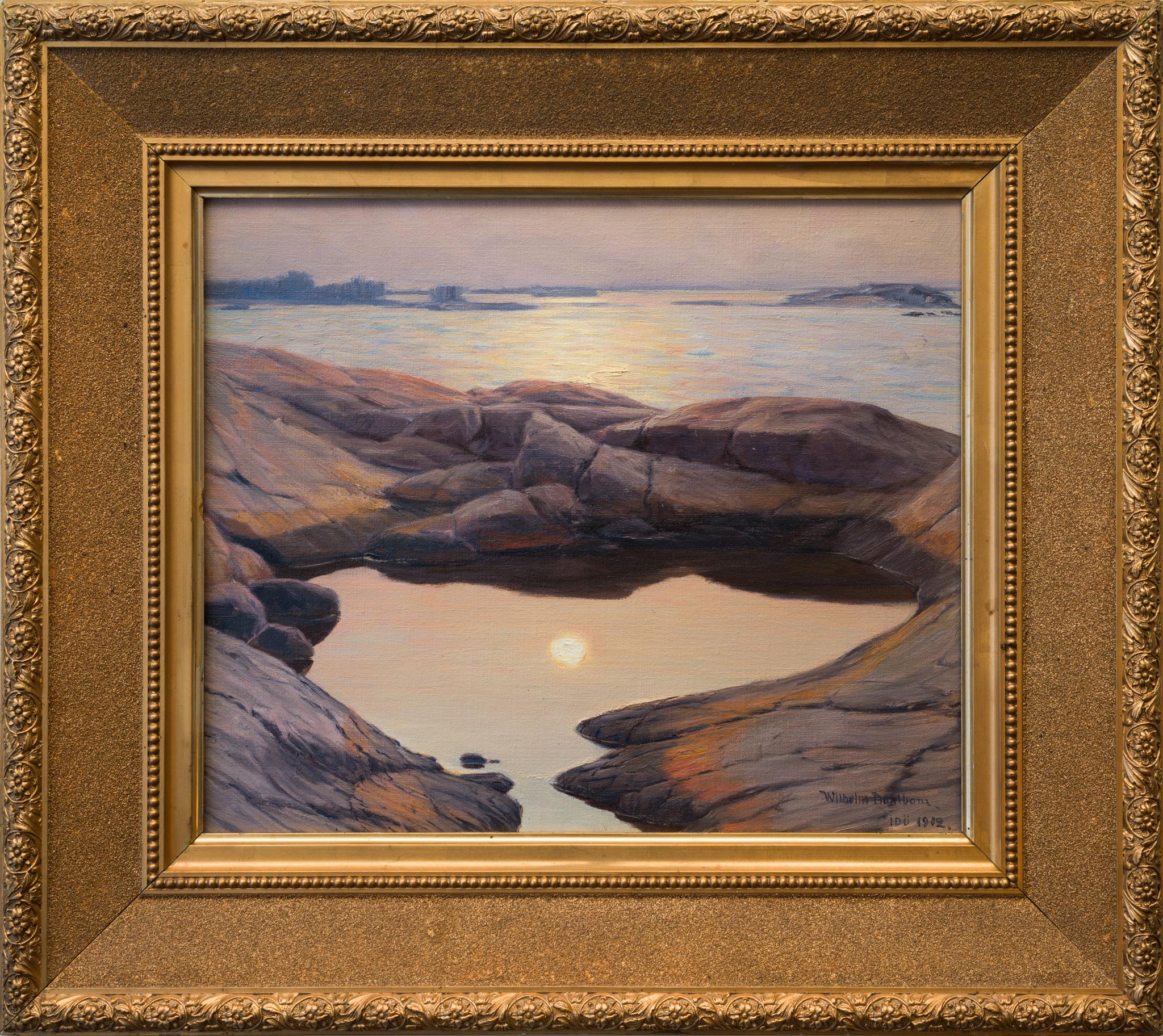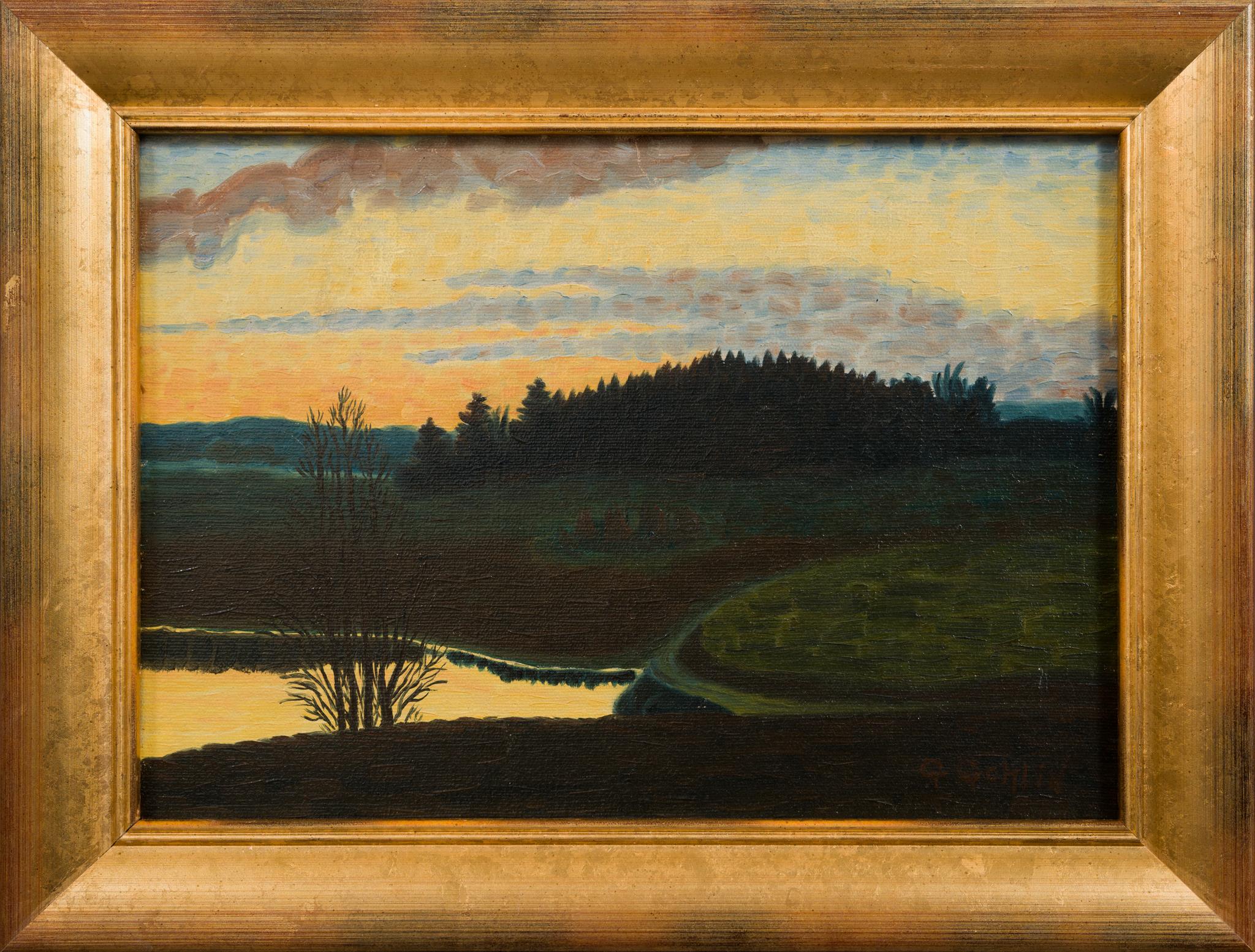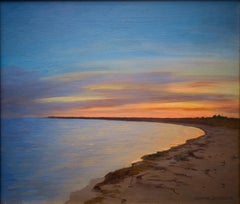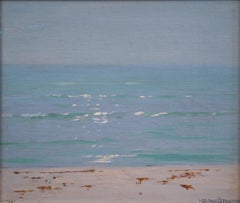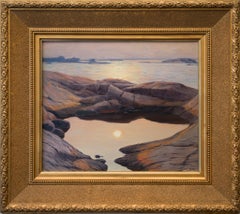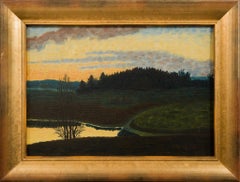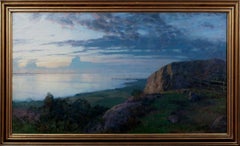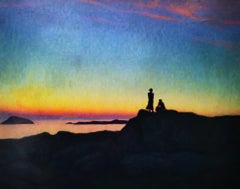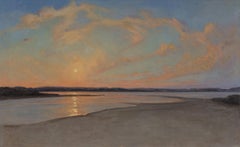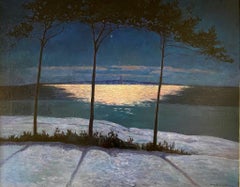Items Similar to Herman Österlund - Beach Curve In The Evening Light, 1920s
Want more images or videos?
Request additional images or videos from the seller
1 of 9
Herman ÖsterlundHerman Österlund - Beach Curve In The Evening Light, 1920s1920s
1920s
$3,527.90
£2,608.82
€2,950
CA$4,882.09
A$5,433.36
CHF 2,828.74
MX$65,613.67
NOK 35,474.99
SEK 33,508.36
DKK 22,469.20
About the Item
Herman Österlund was a renowned Swedish artist recognized for his stunning portrayals of the west coast of Sweden. In 1896, he relocated to Stockholm and successfully passed the entrance examination for the Royal Academy. During this period, he shared a studio with Otto Hesselbom, forging a strong friendship.
After completing three years of studies, Österlund decided to return to the west coast. He initially settled in Löberöd, Skåne, where he resided until 1905. However, he embarked on numerous trips abroad, including visits to Italy, Paris, and Spain, often accompanied by fellow artist Karl Isakson.
In 1909, Österlund moved to Malmö, and in 1913, he began renting a summer studio in Kämpinge, eventually relocating to Arild. It is likely that our painting, "Beach Curve in the Evening Light," depicts either the beach area at Falsterbo or Arild. In this artwork, we witness Österlund's exceptional talent for capturing the enchanting evening light. The painting emanates a serene atmosphere and showcases a simplicity that avoids excessive details. The interplay of light and the curvature of the beach creates a captivating three-dimensional effect, resulting in a truly remarkable masterpiece.
oil on canvas
signed HERMAN ÖSTERLUND
the motif is most likely from Falsterbo, or the area around Arild.
c. 1920s
canvas dimensions 56 x 65.5 cm
frame 66 x 77.5 cm
Provenance:
A Swedish private collection
About the Seller
5.0
Platinum Seller
Premium sellers with a 4.7+ rating and 24-hour response times
Established in 2020
1stDibs seller since 2020
192 sales on 1stDibs
Typical response time: <1 hour
Associations
International Confederation of Art and Antique Dealers' Associations
- ShippingRetrieving quote...Shipping from: Stockholm, Sweden
- Return Policy
Authenticity Guarantee
In the unlikely event there’s an issue with an item’s authenticity, contact us within 1 year for a full refund. DetailsMoney-Back Guarantee
If your item is not as described, is damaged in transit, or does not arrive, contact us within 7 days for a full refund. Details24-Hour Cancellation
You have a 24-hour grace period in which to reconsider your purchase, with no questions asked.Vetted Professional Sellers
Our world-class sellers must adhere to strict standards for service and quality, maintaining the integrity of our listings.Price-Match Guarantee
If you find that a seller listed the same item for a lower price elsewhere, we’ll match it.Trusted Global Delivery
Our best-in-class carrier network provides specialized shipping options worldwide, including custom delivery.More From This Seller
View AllBeach Curve in the Evening Light by Swedish Artist Herman Österlund, 1920s
Located in Stockholm, SE
Herman Österlund was a Swedish artist best known for his beautiful depictions of the west coast of Sweden.
He moved to Stockholm in 1896 and passed the test for entering the Royal A...
Category
1920s Realist Landscape Paintings
Materials
Canvas, Oil
Ocean View from the West Coast by Swedish Artist Herman Österlund, 1916
Located in Stockholm, SE
Herman Österlund (1873-1964) Sweden
Ocean View from the West Coast, 1916
oil on canvas
signed and dated Herman Österlund 1916
canvas dimensions 14.37 x 16.73 inches (36.5 x 42.5 cm...
Category
1910s Naturalistic Landscape Paintings
Materials
Canvas, Oil
Moonlight over the Lake, 1912, By Swedish Artist Wilhelm Dahlbom
Located in Stockholm, SE
We are pleased to present this exquisite piece by Swedish artist Wilhelm Dahlbom, entitled "Moonlight, Idö, 1912". This work captures the serene reflection of moonlight on water, the...
Category
1910s Romantic Landscape Paintings
Materials
Canvas, Oil
Evening Glow by Swedish Artist Gustav Andreas Gehlin
Located in Stockholm, SE
Evening Glow by Gustav Andreas Gehlin
This exquisite oil painting, "Evening Glow," is a captivating work by the Swedish artist and photographer Gustav Andreas Gehlin. He studied un...
Category
Early 20th Century Landscape Paintings
Materials
Canvas, Oil
Landscape from the North of Sweden by Swedish Artist Otto Lindberg, 1926
Located in Stockholm, SE
Otto Lindberg was a Swedish artist born in Söderhamn in 1880. Lindberg was known for his landscapes and marine paintings. He studied at the Royal Academy of Fine Arts in Stockholm an...
Category
1920s Post-Impressionist Landscape Paintings
Materials
Canvas, Oil
$2,774 Sale Price
20% Off
An Autumn Evening Study, 1901 (En höstkvällstudie, 1901)
By Fritz Lindström
Located in Stockholm, SE
This landscape painting by Swedish artist Fritz Lindström captures the tranquility of the Stockholm archipelago. "An Autumn Evening Study, 1901" is a stunning portrayal of a rural scene at dusk. The painting's delicate pink and purple sky envelops the landscape in a soft glow, hinting at the transition from day to night. In the middle ground, a farmer with his horse can be seen plowing a field, adding a narrative element to this peaceful scene. This work is one of several paintings Lindström created during this period, following his time in France and prior to joining the Rackstad group in 1903.
BIOGRAPHY
Fritz Lindström started his artistic journey as an apprentice in decorative painting under Carl Grabow, where he met fellow artist Björn Ahlgrensson. He later studied at the Artists' Association School in Stockholm with Richard Bergh (1892–1894 and 1895–1896) and at Valand Art School in Gothenburg under Carl Larsson (1894–1895). His studies continued in Copenhagen and Paris from 1897 to 1899.
In 1900, Lindström returned to Sweden, drawn to Värmland by his friend and brother-in-law Björn Ahlgrensson. From 1903 onwards, he became part of the Rackstad group—a community of artists who saw the countryside as an ideal setting for artistic and spiritual work. This belief resonated with Lindström, and he remained dedicated to this lifestyle for over fifty years, living and working by Lake Racken.
Lindström's early artistic focus was on the challenging art of human studies, which piqued his interest. Despite financial struggles and difficulty selling his paintings, he gained recognition mainly for his portraits, known for their well-constructed composition and deep psychological insight. Portrait painting became crucial for his financial stability. Interest in his landscape paintings grew when the director of the National Museum happened upon his landscapes during an exhibition opening...
Category
Early 1900s Landscape Paintings
Materials
Canvas, Oil
$9,471 Sale Price
20% Off
You May Also Like
French Coastal Sunset, possibly near Etretat, Le Havre, dated 1928
Located in Blackwater, GB
French Coastal Sunset, possibly near Etretat, Le Havre, dated 1928
by Alfred Bergström (1869-1930)
Fine huge 1928 French Coastal Sunset Landscape, p...
Category
19th Century Portrait Paintings
Materials
Canvas, Oil
"Summer Evening in the Swedish Archipelago", original oil on canvas, Tonalist
Located in Naples, Florida
This is an original unique oil painting by the artist. Sigfrid Andreas "Sigge" Jernmark (July 9, 1887 – July 12, 1982) was a Swedish painter, cartoonist and decorator. Jernmark recei...
Category
20th Century Tonalist Landscape Paintings
Materials
Canvas, Oil
"Summer Over Bridgehampton" - realist landscape painting, sun setting over beach
By Melissa Franklin Sanchez
Located in Sag Harbor, NY
"Summer Over Bridgehampton" is an oil on brass landscape painting. The painting shows the sun setting over a mecox bay from Scott Cameron Beach in The Hamptons. Clouds swirl around t...
Category
2010s Realist Landscape Paintings
Materials
Brass
"Sandhamn, Near Stockholm", Swedish evening landscape, oil on canvas
Located in Naples, Florida
This is an original unique oil painting by the artist. Artur Bianchini (October 18, 1869 – February 16, 1955) was a Swedish artist who studied at the Académie Julien in Paris from 18...
Category
20th Century Tonalist Landscape Paintings
Materials
Canvas, Oil
$11,280 Sale Price
20% Off
Contemporary French Impressionist Oil Sunset over Sea Sand Dunes Beach Pathway
Located in Cirencester, Gloucestershire
Sunset
by Georges Bordonave (French contemporary)
signed oil painting on canvas, unframed
dated 1985
canvas: 13 x 16 inches
condition: very good
provenance: from a large private coll...
Category
Late 20th Century Impressionist Landscape Paintings
Materials
Oil
Evening Atmosphere - Painting by D. Lukas-Larsen - Late 20th Century
Located in Roma, IT
Evening Atmosphere on the coast is an original painting realized by Dieter Lukas-Larsen (1936 - 2001) in the late 20th Century.
Mixed colored oil painting on canvas.
Signed on the lower right margin.
This beautiful artwork shows an atmospheric coastal landscape in evening light mood with strollers on the beach and thatched house...
Category
Late 20th Century Naturalistic Figurative Paintings
Materials
Oil
More Ways To Browse
Antique Beach Painting
Antique Beach Signs
Spanish Beach Oil Paintings
1920s Beach Painting
Karl Otto
John Lake
Naive Landscape
Waterfall Painting
New York Cityscape Oil
Painting Of Umbrellas
Saint George Painting
Industrial Scene Painting
Impressionist Bird Painting
Vermont Landscape Painting
European School Paintings 19th Century
Oil Painting Cathedral
Scottish School Oil Painting
Signed Postcards
